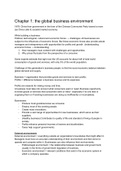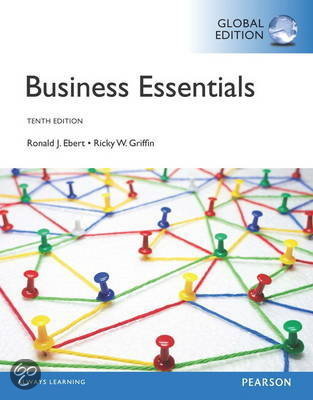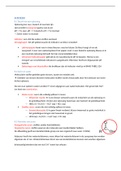Samenvatting
Summary Business essentials, gobal edition
- Vak
- Instelling
- Boek
Summary study book Business Essentials, Global Edition of Ronald Ebert, Ricky Griffin - ISBN: 9781292016900, Edition: 10, Year of publication: - (Chapters 1 - 10.)
[Meer zien]





